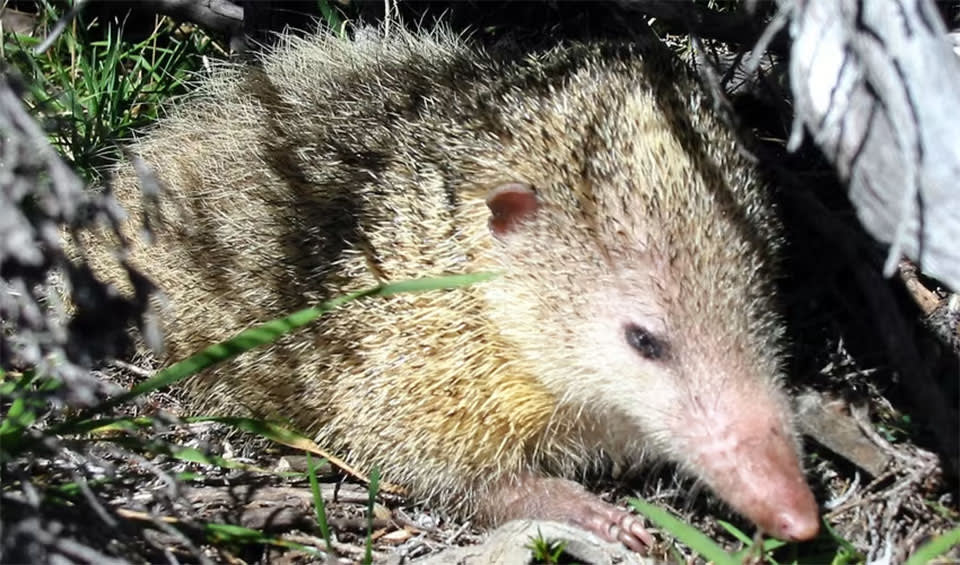The large-eared tenrec stands out in the diverse family of tenrecs due to its distinctly large, projecting ears, a feature that is not just for show but plays a crucial role in its survival strategies. This species is among the smallest extant tenrecs, showcasing an evolutionary marvel of adaptation and specialization. Their physical appearance is characterized by a short and soft coat, exhibiting hues of greyish-brown or reddish-brown on the upper side, with a lighter, buffish-white coloring on the underside. Adding to their distinctive look is a tail adorned with long, hairy fur, which contrasts with the shorter fur on their body.
Despite being nocturnal creatures, large-eared tenrec have relatively poor eyesight, a common trait among many nocturnal mammals. However, what they lack in visual acuity, they more than make up for with their heightened auditory and olfactory senses. Their large ears are not merely for aesthetic purposes; they are highly functional, allowing these tenrecs to detect and home in on the faintest sounds of their prey moving in the darkness. Similarly, their keen sense of smell aids them in navigating their nighttime environment and locating food sources.
Adapted to life in various habitats, including forests and dry regions of Madagascar, large-eared tenrecs exhibit fascinating physiological traits, such as a low metabolic rate and heterothermy. This means they can adjust their body temperature to match the external environment, a useful adaptation for conserving energy. During the daytime, when temperatures rise, they enter a torpid state, significantly reducing their physiological activities to cope with the heat and minimize water loss.
Distribution
 Madagascar
MadagascarAnything we've missed?
Help us improve this page by suggesting edits. Glory never dies!
Suggest an editGet to know me
Terrestrial / Aquatic
Altricial / Precocial
Polygamous / Monogamous
Dimorphic (size) / Monomorphic
Active: Diurnal / Nocturnal
Social behavior: Solitary / Pack / Herd
Diet: Carnivore / Herbivore / Omnivore / Piscivorous / Insectivore
Migratory: Yes / No
Domesticated: Yes / No
Dangerous: Yes / No




